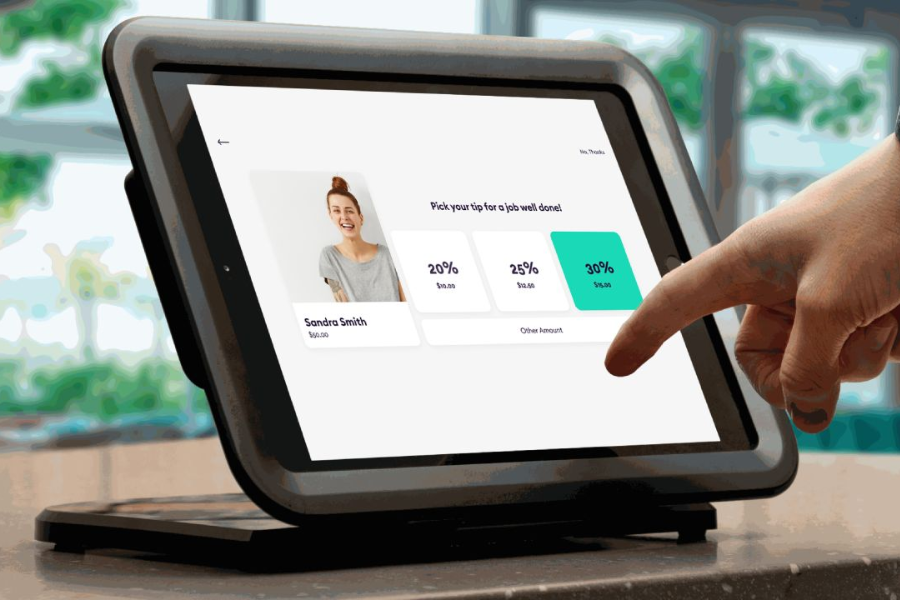From Cash to Clicks: The Rise of Tipping Screens in Modern Transactions
Introduction
Tip screens are interactive digital interfaces designed to encourage customers to leave gratuities following a service transaction. Often found in point-of-sale (POS) systems, mobile payment applications, or self-service kiosks, these screens streamline the tipping process, enhancing the overall customer experience while fostering a culture of generosity. This, in turn, positively impacts employee morale and service quality.
The Evolution of Tipping
The tradition of tipping has been a cornerstone of the service industry for years. However, conventional methods—such as cash tips or handwritten notes—are increasingly impractical in our digital age. As cashless payments and mobile technology gain prominence, the demand for an updated tipping solution has paved the way for tip screens. These digital interfaces not only simplify the process but also allow businesses to customize the tipping experience to suit their brand and clientele.
Advantages of Tip Screens
- Customer Convenience:
Tip screens offer a quick and easy way for customers to express their appreciation for excellent service. With just a few taps, patrons can select a tip amount and complete their payment without fumbling for cash or coins. - Boosting Employee Tips:
By facilitating a more accessible tipping process, tip screens often lead to increased gratuities. Their user-friendly design encourages customers to leave a tip, resulting in more consistent and generous rewards for employees. - Improving Customer Experience:
An effectively designed tip screen can provide a positive conclusion to a service encounter. A smooth, intuitive tipping process can leave a lasting impression, encouraging customer loyalty and repeat business. - Valuable Insights:
Tip screens can generate valuable data about customer behavior and preferences. By analyzing tipping trends, average amounts, and peak times, businesses can refine their service strategies and enhance employee incentives.
How Tip Screens Operate
Tip screens are typically integrated with existing POS systems or mobile payment platforms. After a transaction is finalized, the tip screen activates, presenting the customer with various tipping options—usually formatted as percentage amounts (like 10%, 15%, or 20%) or custom dollar amounts. Customers select their desired tip and confirm the transaction, which is then appended to their total bill.
Advanced tip screens may offer additional features, including:
- Personalized Messages: Businesses can customize the interface with thank-you notes or promotional offers, enhancing the interaction’s personal touch.
- Feedback Mechanisms: Customers can share their experiences, providing businesses with crucial insights to improve service quality.
- Charitable Options: Some tip screens allow customers to donate to charity, either in lieu of or in addition to tipping the service provider.
Designing an Effective Tip Screen
Creating a successful tip screen goes beyond simply incorporating technology into your payment system. The design and functionality are essential for achieving positive results. Here are some critical considerations:
- User-Friendly Design:
The interface should be intuitive and straightforward, with clearly defined tipping options. Avoid overcrowding the screen with excessive choices, and ensure that buttons are large enough for easy navigation by all users. - Brand Customization:
Personalize the tip screen to reflect your brand identity. This includes using your company’s colors, logo, and messaging to create a unified customer experience. - Psychological Cues:
Leverage the psychology behind tipping in your design. For example, defaulting to a moderate tip percentage can subtly nudge customers towards selecting that option. Positive language, such as “Thank you for supporting our team,” can also encourage generosity. - Accessibility Considerations:
Ensure the tip screen is accessible to all users, including those with disabilities. This may involve incorporating voice-activated features or ensuring compatibility with screen readers.
FAQs:
1. What is a tipping screen?
A tipping screen is an interactive digital interface that prompts customers to leave a gratuity after a service transaction. It is typically integrated into point-of-sale (POS) systems, mobile payment applications, or self-service kiosks, allowing users to easily select a tip amount and complete their payment.
2. How do tipping screens work?
After a customer completes a transaction, the tipping screen appears, offering various tipping options, usually as percentage amounts (like 10%, 15%, or 20%) or custom dollar amounts. Customers can select their preferred tip and confirm the transaction, which is then added to their total bill.
3. What are the benefits of using a tipping screen?
Tipping screens provide convenience for customers, increase tips for employees, enhance the overall customer experience, and offer valuable insights into customer behavior and preferences through data analytics.
4. Can businesses customize tipping screens?
Yes, businesses can customize tipping screens to reflect their brand identity, including using company colors, logos, and personalized messages. Customization enhances the customer experience and fosters a connection between the business and its clientele.
5. Are tipping screens accessible for all users?
When designed effectively, tipping screens can be made accessible to all users, including those with disabilities. This can include features like voice activation and compatibility with screen readers.
6. Can tipping screens be used for charitable donations?
Some tipping screens have features that allow customers to donate to a charity instead of or in addition to tipping the service provider. This adds an extra layer of social responsibility to the tipping process.
7. What insights can businesses gain from tipping screens?
Businesses can analyze tipping patterns, average tip amounts, and peak tipping times, enabling them to optimize service strategies and improve employee incentives based on customer behavior.
Conclusion
Tipping screens represent a significant evolution in how gratuities are given and received in the service industry. By providing a convenient, user-friendly interface for customers, these digital platforms enhance the overall customer experience while encouraging generosity and improving employee satisfaction. As cashless payments and mobile technology continue to shape the landscape of service transactions, implementing an effective tipping screen can offer businesses a competitive edge, fostering a culture of appreciation and boosting morale among staff. By carefully designing and customizing these screens, businesses can not only streamline the tipping process but also build a stronger connection with their customers, ultimately leading to increased loyalty and repeat visits.






